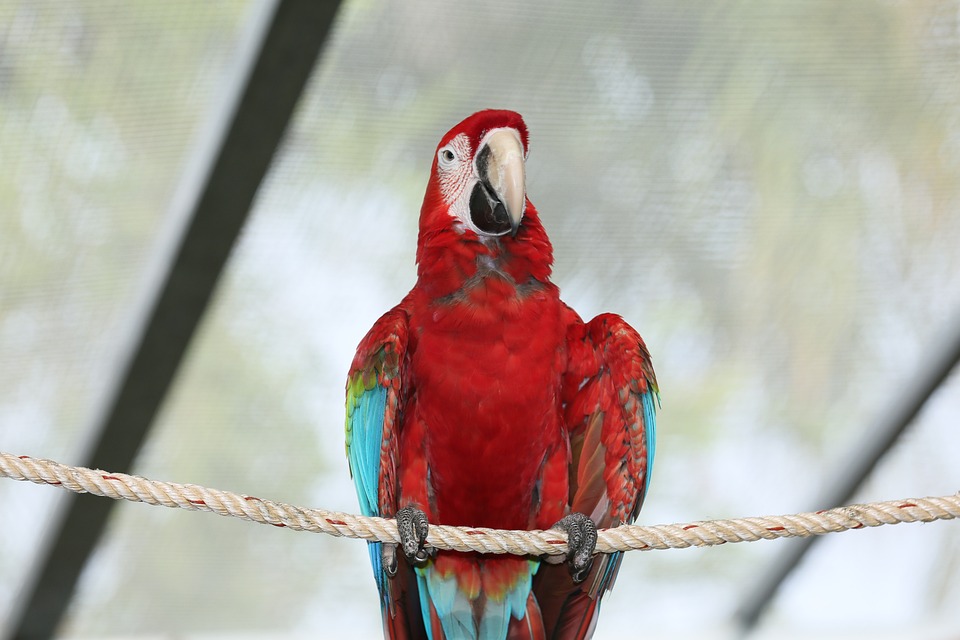Understanding Parrot Behavior: How Fear and Stress Triggers Impact their Responses
Parrots are fascinating creatures with complex behaviors that are influenced by various factors. Among these factors, fear and stress play significant roles in shaping parrot responses. As highly intelligent and social animals, it is crucial to comprehend their behavior to ensure their well-being and promote positive interactions. In this article, we will delve into the effects of fear and stress on parrots, explore common triggers, and provide insights into managing and mitigating these responses.
I. The Nature of Parrot Behavior
A. Social nature and flock mentality: Parrots are social animals that thrive in a flock environment. They have a strong need for companionship and interaction with others of their species or with humans.
B. Complex communication systems: Parrots possess intricate communication skills, using a combination of vocalizations, body language, and mimicry to express themselves and interact with their surroundings.
C. Emotional sensitivity: Parrots are highly sensitive to their environment and can experience a wide range of emotions, including fear, stress, happiness, and affection.
II. The Impact of Fear on Parrot Behavior
A. Fight, flight, or freeze response: When confronted with fear-inducing stimuli, parrots may exhibit the fight, flight, or freeze response. This instinctual reaction helps them cope with potential threats.
B. Physical and behavioral signs of fear: Parrots may display physical signs of fear, such as raised feathers, dilated pupils, trembling, or crouching low. They may also exhibit behavioral signs, including vocalizing loudly, biting, or retreating to a safe place.
C. Common fear triggers: Parrots can be triggered by various stimuli that induce fear, such as loud noises, sudden movements, unfamiliar environments, changes in routine, or the presence of unfamiliar people or animals.
III. Understanding Stress in Parrots
A. Definition of stress in parrots: Stress in parrots refers to a state of physical or psychological tension caused by external factors or internal imbalances. It can have detrimental effects on their overall well-being.
B. Physical and behavioral signs of stress: Parrots may display physical signs of stress, such as feather plucking, excessive vocalization, loss of appetite, self-mutilation, or excessive chewing. Behavioral signs may include aggression, withdrawal, or hiding.
C. Common stress triggers: Parrots can experience stress due to a lack of mental stimulation and environmental enrichment, an inadequate diet and nutrition, or overcrowding and a lack of personal space.
IV. The Interplay between Fear, Stress, and Parrot Behavior
A. Fear as a source of chronic stress: Persistent fear can lead to chronic stress in parrots, affecting their overall well-being and behavior.
B. Cumulative effects of fear and stress on behavior: The cumulative effects of fear and stress can manifest in various behavioral issues, such as aggression, phobias, self-destructive behaviors, or excessive vocalization.
C. Long-term health implications: Prolonged fear and stress can have detrimental effects on a parrot’s physical health, including weakened immune systems, digestive issues, and increased susceptibility to disease.
V. Managing Fear and Stress in Parrots
A. Creating a safe and enriching environment: Providing a safe and enriching environment with plenty of mental stimulation, appropriate perches, toys, and social interaction can help alleviate fear and stress in parrots.
B. Positive reinforcement training techniques: Building trust through positive reinforcement training techniques can help reduce fear and anxiety in parrots. Gradual desensitization to fearful stimuli is also effective in helping them overcome their fears.
C. Establishing a consistent routine and predictable environment: Parrots thrive on routine and predictability. Establishing a consistent daily routine and minimizing sudden changes can help reduce fear and stress.
D. Seeking professional help when needed: If fear or stress responses persist or become severe, it is essential to consult a veterinarian or avian behaviorist. They can assess the parrot’s behavior, identify underlying causes, and provide guidance on appropriate management techniques or training protocols.
VI. Frequently Asked Questions (FAQs)
1. How can I tell if my parrot is stressed or fearful?
Parrots may display physical signs such as feather plucking, excessive vocalization, aggression, loss of appetite, self-mutilation, excessive chewing, or hiding. Changes in body posture, such as fluffing feathers or crouching low, may also indicate stress or fear.
2. What are some effective ways to reduce fear in parrots?
Building trust through positive reinforcement training techniques, gradual desensitization to fearful stimuli, providing a safe and enriched environment, and establishing a consistent routine can help alleviate fear in parrots.
3. Can parrots overcome their fears through training?
Yes, parrots can overcome their fears through training. Positive reinforcement techniques and gradual exposure to fear-inducing stimuli can help them associate these triggers with positive experiences, leading to a reduction in fear responses.
4. Is it possible for parrots to develop behavioral issues due to fear and stress?
Yes, fear and stress can lead to the development of behavioral issues in parrots, such as aggression, phobias, self-destructive behaviors, or excessive vocalization. Addressing fear and stress promptly is crucial to prevent the escalation of these issues.
5. When should I consult a veterinarian or avian behaviorist for my parrot’s behavior?
If you notice persistent or severe fear or stress responses in your parrot, it is advisable to seek professional help. A veterinarian or avian behaviorist can assess your parrot’s behavior, identify underlying causes, and provide guidance on appropriate management techniques or training protocols.









